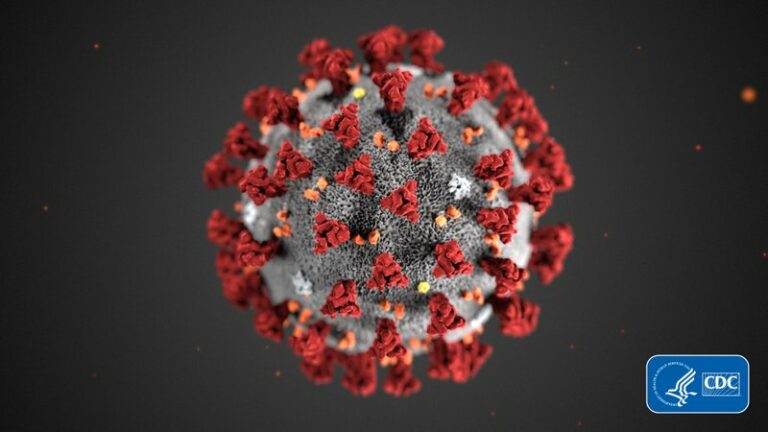Scientists can’t tell yet how deadly the new virus that’s spreading around the globe really is — and deepening the mystery, the fatality rate differs even within China.
As infections of the virus that causes COVID-19 surge in other countries, even a low fatality rate can add up to lots of victims, and understanding why one place fares better than another becomes critical to unravel.
“You could have bad outcomes with this initially until you really get the hang of how to manage” it, Dr. Bruce Aylward, the World Health Organization envoy who led a team of scientists just back from China, warned Tuesday.
WHAT DO WE KNOW ABOUT THE DEATH RATE?
In the central China city of Wuhan, where the new coronavirus first exploded, 2% to 4% of patients have died, according to WHO. But in the rest of hard-hit China, the death rate was strikingly lower, 0.7%.
There’s nothing different about the virus from one place to another. Instead, the never-before-seen strain of coronavirus struck Wuhan fast — before anyone knew what the illness was — and overwhelmed health facilities. As is usual at the beginning of an outbreak, the first patients were severely ill before they sought care, Aylward said.
By the time people were getting sick in other parts of China, authorities were better able to spot milder cases — meaning there were more known infections for each death counted.
And while there are no specific treatments for COVID-19, earlier supportive care may help, too. China went from about 15 days between onset of symptoms and hospitalization early in the outbreak, to about three days more recently.
Still, Aylward expressed frustration at people saying: “‘Oh, the mortality rate’s not so bad because there’s way more mild cases.’ Sorry, the same number of people that were dying, still die.”
WHAT ABOUT DEATHS OUTSIDE OF CHINA?
Until the past week, most people diagnosed outside of China had become infected while traveling there.
People who travel generally are healthier and thus may be better able to recover, noted Johns Hopkins University outbreak specialist Lauren Sauer. And countries began screening returning travelers, spotting infections far earlier in places where the medical system wasn’t already strained.
That’s now changing, with clusters of cases in Japan, Italy and Iran, and the death toll outside of China growing.
Aylward cautioned that authorities should be careful of “artificially high” death rates early on: Some of those countries likely are seeing the sickest patients at first and missing milder cases, just like Wuhan did.
HOW DOES COVID-19 COMPARE TO OTHER DISEASES?
A cousin of this new virus caused the far deadlier severe acute respiratory syndrome outbreak in 2003, and about 10% of SARS patients died.
Flu is a different virus family, and some strains are deadlier than others. On average, the death rate from seasonal flu is about 0.1%, said Dr. Anthony Fauci of the U.S. National Institutes of Health.
That’s far lower than what has been calculated so far for COVID-19. But millions of people get the flu every year around the world, leading to an annual death toll in the hundreds of thousands.
WHO’S MOST AT RISK FROM COVID-19?
Older people, especially those with chronic illnesses such as heart or lung diseases, are more at risk.
Among younger people, deaths are rarer, Aylward said. But some young deaths have made headlines, such as the 34-year-old doctor in China who was reprimanded by communist authorities for sounding an early alarm about the virus only to later succumb to it.
In China, 80% of patients are mildly ill when the virus is detected, compared with 13% who already are severely ill. While the sickest to start with are at highest risk of death, Aylward said, a fraction of the mildly ill do go on to die — for unknown reasons.
On average, however, WHO says people with mild cases recover in about two weeks, while those who are sicker can take anywhere from three to six weeks.
(AP)











2 Responses
Dr. Francis Anthony Boyle (1950 – Present) is a professor of international law at the University of Illinois College of Law; he is especially well known for being the author of the Biological Weapons Anti-Terrorism Act of 1989. (https://en.wikipedia.org/wiki/Francis_Boyle) Please see the video of an interview with him at https://www.naturalnews.com/2020-02-04-dr-francis-boyle-confirms-coronavirus-an-offensive-biological-warfare-weapon.html, where he explained that this strain of the coronavirus is a man-made genetically engineered biological weapon that has been designed and manufactured to be as deadly and as harmful as possible. It was produced in and “somehow” leaked out of one of Communist China’s major bioweapons laboratories in the Wuhan Province — right where the outbreak started.
John Loftus (Ami Magazine’s intelligence writer) speculates it was deliberately released by the Russians in Wuhan to spread around China so the Russians can sell them the vaccine for trillions of $$$.
It will be interesting to see if it’s the Russians who suddenly ‘come up’ with a cure for Co-vid 19…….